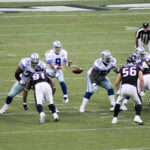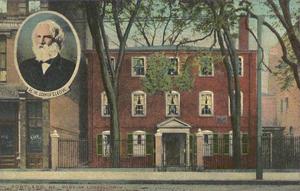The Ford Mustang has been built for years with a single goal overwhelmingly in mind: To provide stylish sportiness at an affordable price. When building horsepower in these cars, whether equipped with the original 170 cubic inch six-cylinder engine in the 1964 1/2 Mustang, or the all-new 5.4L supercharged V8 equipped in the 2011 Ford Shelby Mustang GT500, the same tricks work to improve the overall horsepower of the engine without sacrificing drivability.
What not to do
The most important aspect of adding horsepower to your Mustang is to understand first what won’t work, and what not to do. Horsepower is big business in the aftermarket automotive industry, and there’s a lot of unscrupulous dealers out there trying to separate your cash from your wallet with promises of cheap, easy horsepower for your Mustang. What was once called “snake oil” still exists today in the form of any chemical which claims to increase the horsepower in your Mustang. While certain chemicals might help to restore seals and lost compression within the cylinders, these are temporary fixes at best, and do not provide an overall increase of horsepower. In many cases, in fact, they don’t actually increase, but can decrease horsepower!
Avoid “gadget” horsepower adders, as well. While newer computer controlled Mustangs can benefit from relatively inexpensive ECM tuning, cheap add-ons (pretty much anything priced below $49.95) don’t work at all. Some of the more popular junk add-ons include fuel line magnets, as well as a recent product which was called the “turbonator” In fact, some of these junk products actually get called out by the FTC, not just the Mythbusters, and end up sued for making exaggerated claims of the effectiveness of their products. The problem is, every few years, the same junk products hit the market again and again under different names.
What you need to do
In new Mustangs, the best defense to maintain horsepower is to maintain compression. This means taking care of the car with regular oil changes, first of all. In older Mustangs, most particularly those built between 1964 and 1990, having the engine rebuilt is a great idea to regain lost compression and gain back the horsepower which was lost.
Fuel + air + exhaust = horsepower!
The only way to increase horsepower effectively in any Mustang, whether it be a V6 or V8 engine, old or new, is to increase the amount of fuel, air, and exhaust which the engine processes. To increase horsepower in carbureted Mustangs, try mounting a four-barrel carburetor, low-restriction air filter, and a free-flowing exhaust system. New Mustangs benefit from an increased throttle body size combined with slightly larger fuel injectors coupled with a cold air intake and low-restriction exhaust system. Short of purchasing a supercharger, this is the only way to effectively and safely increase horsepower with bolt-on parts in your Ford Mustang.
Ford Mustang Horsepower Parts that Work.
Cold air intakes
Race-style cylinder heads
Superchargers
Turbochargers
Water/methanol injection systems (on supercharged vehicles)
Camshafts
Roller-style rocker arms
Headers
Dual exhaust systems
Increased capacity intake manifolds
Nitrous Oxide
Electric cooling fans
Under drive pulleys
Ford Mustang Horsepower Parts that Won’t Work
Parts which install into the intake tubing, thus disturbing or disrupting airflow
Fuel additives (water can be used for octane boosting, see Water/methanol injection systems)
Oil additives





